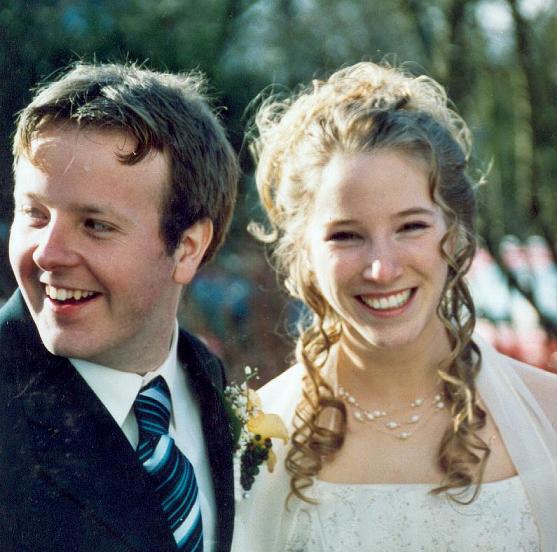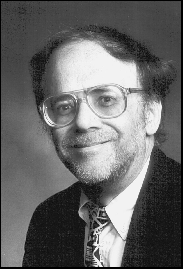The following will appear, with editorial changes, in the
European Journal of Theology.Paul, Moses, and the History of Israel
The Letter/Spirit Contrast and the Argument from Scripture in 2 Corinthians 3
Paternoster Biblical Monographs
Scott J. Hafemann
Milton Keynes: Paternoster, 2005, xii + 497 pp., £29.99, pb, ISBN 1-84227-317-5
How should one understand the letter/Spirit contrast in 2 Cor 3:6? Most scholarship has understood a law/Gospel separation implicit in this verse, and others the key to Paul’s scriptural hermeneutic. Hafemann, in light of ‘the current paradigm shift in Pauline studies’ (16) argues in this reissued monograph (originally published in 1995 by Mohr Siebeck) that time is ripe for a reconsideration of this pivotal passage and its context.
Hafemann proceeds to develop an argument concerning the theological and hermeneutical significance of 2 Cor 3:6 that takes seriously the context, especially that of Paul’s own use of OT Scripture in 3:7-19. Paul’s apostolic defence, Hafemann has argued in detail elsewhere, involves a portrayal of Paul himself as ‘the eschatological counterpart to the role of Moses as the mediator
par excellence between YHWH and his people’ (33-34). The substantiation of this hypothesis in relation to 2 Cor 3:4-6a is the concern of the first two chapters.
Hafemann argues that Paul uses the allusions and parallels to Moses’ call in 2:16b and 3:4-6a to defend the legitimacy of his own ministry. A thorough analysis of the ‘sufficiency’ and ‘call’ of Moses in second Temple literature is undertaken with the purpose of understanding how Exodus 3-4 could be, and indeed was, understood in Paul’s milieu (chapter one). He then turns to address the ‘sufficiency’ and ‘call’ of Paul in 2 Cor 3:4-6 (chapter two). ‘Paul’, Hafemann writes, ‘asserts his sufficiency in spite of the suffering which seems to call his legitimacy into question ... And in each case Paul’s affirmation of his sufficiency is based upon the call of God in his life’ (100). However, while Paul asserts the
similarity between his call and the call to Moses in 2:16b and 3:4f, in the letter/Spirit division he explains something of the essential
difference between his ministry and that of Moses. ‘But having done so’, Hafemann asserts, ‘Paul must now substantiate and clarify the letter/Spirit contrast itself in order to keep it from being either rejected out of hand or misunderstood’ (185).
This leads to part two in which Hafemann addresses the apparent contradictory Pauline view of Moses’ ministry in 2 Cor 3. This is done by investigating Paul’s understanding of Moses’ role in the ‘second giving of the law’ as found in Exodus 32-34. Chapters three to five analyse Paul’s interpretation of this OT source with the aim of showing that Paul derived his argument concerning the nature and legitimacy of his own ministry from the Scriptures. Hafemann’s argument, then, is to determine the nature of the letter/Spirit contrast in light of Paul’s self-understanding of his apostolic ministry in contrast with the ministry of Moses.
It is to Hafemann’s credit that he seeks to understand the ministry of Moses in its wider canonical context, a strategy less widely accepted when the monograph was published in 1995. This leads him to conclude that the veil on Moses’ face was actually provided in order to stop the Israelites looking in to the glory of God and suffering death because of their hard-heartedness (chapter three). In chapter four, and his study of 2 Cor. 3:7-11, he analyses the significance of the ‘veil’ in Paul’s argument. While others have taken this as evidence that Paul radically reinterprets the original intent of Exod 34, Hafemann proposes that Paul was being true to the meaning of his OT source. This also means that ‘[i]t is Moses’
ministry which can appropriately be associated with “death”, not the law
per se’ (285). In response to the question as to whether Paul was changing the OT text by speaking of the fading glory on Moses face, Hafemann argues that the Greek should be understood to read ‘because of the glory of his face,
which was being rendered inoperative’ (310). Thus, ‘Paul is
already referring to the fact that the veil of Moses brought the glory of God to an end in terms of that which it would accomplish if not veiled, i.e. the judgment and destruction of Israel’ (311). This use of Exodus is thus not
midrash or
pesher. Paul has presented an interpretation of the Scriptures which is based on their ‘original intention’ (458). These observations are tied smoothly to his structural analysis.
Chapter five develops the argument in relation to 2 Cor 3:12-18. In these verses, Paul argues that his ministry mediates the Spirit and glory of God in such a way that brings life and not, as with Moses, the destruction that would have been wrought had he not worn the veil. For this interpretation, Hafemann offers a plausible way of reading the
telos in 3:13. Given Paul’s faithfulness to the Exodus narrative, Hafemann argues that the ‘Lord’ mentioned in vv. 16-18 is not christological, but rather indicates YHWH. Further, by turning to the Lord the believer, in fulfilment of Jer 31:31ff and Ezek 36:26ff, has his hard heart removed so that he may now behold the glory of the Lord. This also means that the freedom of 3:17 is not freedom
from the law, but rather freedom
for the law. 2 Cor 3 thus doesn’t contain negative and positive mentions of the law. Rather, the difference between the two ministries of Paul and Moses are to be based upon a ‘salvation-history’ contrast. This allows Hafemann to assert that Paul has a thoroughly positive view of the law both within the old and new covenants. While the whole monograph has been a detailed focus on just one chapter in Paul, he argues that 2 Cor 3 can be treated as paradigmatic for Paul’s theology generally.
Not all critical responses to Hafemann’s arguments have been fair. C. Marvin Pate (in
The Reverse of the Curse, [Tübingen: Mohr Siebeck, 2000]), for example, has arguably not entirely understood Hafemann’s thesis. However, though Hafemann’s contribution is detailed, creative and even at times brilliant, there remains the need for judicious reflection. First, as Pate has pointed out, ‘letter’ is perhaps better understood as indicative of the law itself. In this regard, Hafemann’s questionable appeal to Rom 2:27-29 and 7:6 in support of his thesis needs to be challenged. His argument also raises more serious and broader questions: if the law is operative for the Christian then why does Paul teach that Christians are dead to the law in Romans 7:1-6? And if only part of the law remains binding on Christians, then what of Galatians 5:3 in which the law appears to be portrayed as an indivisible unity (cf. Pate)? Second, not all will be persuaded by Hafemann’s interpretation of the Greek words
katargew and
telos even if the latter remains plausible to this author. As Pate writes: ‘Hafemann’s interpretation seems to be born out of a desire to extricate Paul from altering Exodus 34:29-35 ... [But if] Paul can recast Jeremiah 31:31-34 and Ezekiel 26:25f. by eliminating the presence of the law in the new covenant in Christ ..., then so can he revise Exodus 34:29-35’ (426). Third, Hafemann argues that the ‘value of the LXX is seen most clearly ... in
comparison to the Hebrew tradition as its
Vorlage’ (191, 243-48). This is then often reduced to comparison of the LXX with the MT, which informs his arguments at various points. However, ‘[W]hile it is convenient to use
BHS or
BHK as a starting point for understanding what undergirded the LXX translations, it is dangerous, dishonest and wrong to assume that Leningradensis B 19A (MT) lay before the pre-Christian translators’ (Cf. Melvin K. H. Peters, “Septuagint,” in
The Anchor Bible Dictionary. Vol 5. [London: Doubleday, 1992], 1100). Further, there exist particularly noteworthy anomalies between the LXX and the MT precisely at key verses in Hafemann’s argument. For example, the existing Greek versions of Jeremiah and Ezekiel 36:23-38 were probably based upon different Hebrew texts than represented by the MT. Fourth, one wonders why Hafemann has not engaged with the Psalmic tradition which describes those who have sought to behold the glory of God without any fear of death, but rather with expectation of delight (cf. Ps 42; 63). Finally, it is difficult to be as confident as Hafemann is in terms of the specific referent of the title
kurios in 3:16-18; the matter is more complicated than he seems to appreciate.
These points aside, this is a work of massive learning and piecing intellect that will repay anyone who takes the necessary time to work though his careful and detailed research.



















